In today’s world, security has become a top priority for individuals and businesses alike. With the rise of crime rates and the increasing need for surveillance, installing a security camera has become a popular solution to ensure safety and peace of mind.
However, the process of installing a security camera can be overwhelming for those who are not familiar with the technicalities involved. Installing a security camera can effectively protect your home or business from theft and vandalism. While it may seem like a daunting task, with the right tools and instructions, it can be a manageable DIY project.
Here, we will provide you with an essential guide on how to install a security camera. We will discuss key factors before installing a camera, such as wired vs. wireless cameras and DIY vs. professional installation. Additionally, we’ll cover app setup and customization, connecting the DVR box to the cameras, and adding a hub to your security camera system.
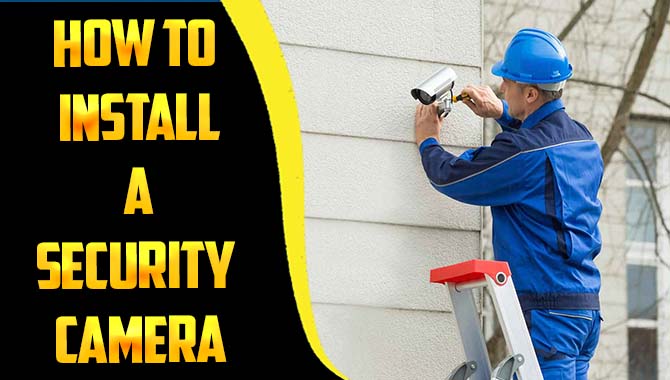
How To Install A Security Camera: Essential Tips
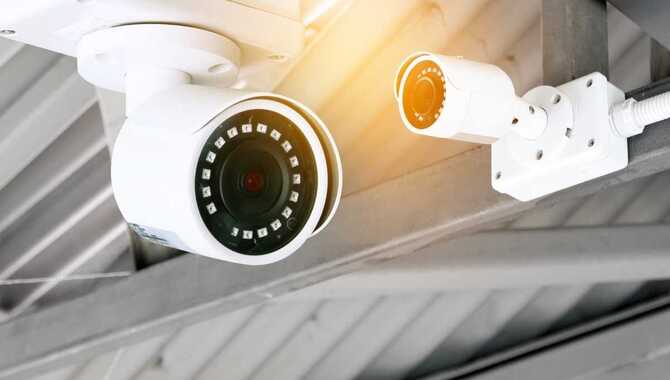
Here is the process on how to install a security camera. Installing a security camera requires careful consideration of several essential tips. Firstly, pick the right location based on your needs. Secondly, ensure you have all the necessary equipment and tools before installation.
Thirdly, strictly follow the manufacturer’s instructions to avoid any mishaps. Fourthly, conduct proper testing post-installation to ensure functionality. Lastly, don’t hesitate to call in professionals if needed. Protect your home easily by following these crucial steps for installing a security camera.
Key Factors To Consider Before Installing A Camera
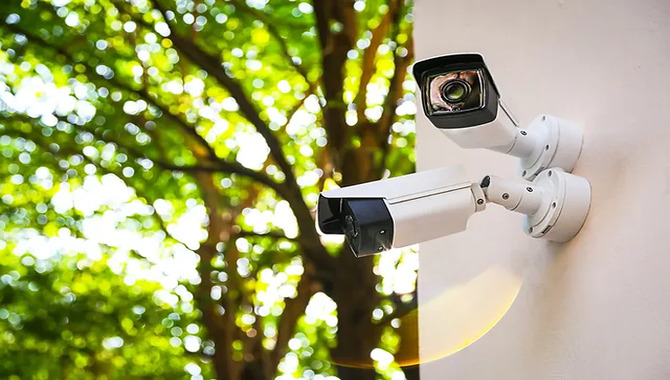
When planning to install a security camera, there are some crucial factors one must take into account. Begin by determining the camera’s purpose and selecting an ideal location to capture footage effectively. Next, choose from various types of cameras available based on your requirements- bullet or dome cameras.
For better convenience, consider getting a camera with ample storage options and cloud storage solutions. Ensuring the camera is compatible with your existing security system and has adequate connectivity options for seamless surveillance is essential. Incorporating these factors will guarantee better functionality and protection for your home or office.
Wired Vs. Wireless Cameras: Which One Is Right For You?
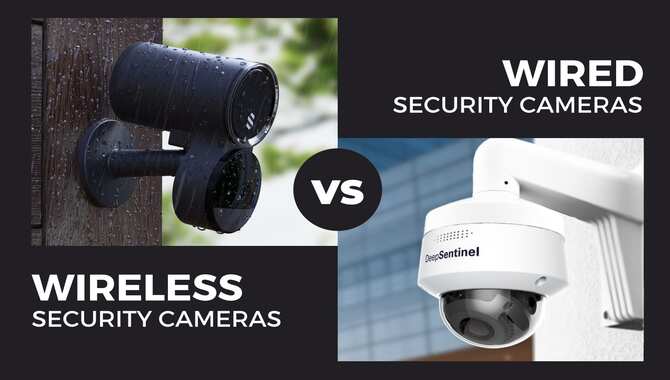
When choosing between wired and wireless security cameras, key differences exist. Wired cameras require a physical connection to the recording device, whereas wireless cameras use Wi-Fi or Bluetooth. Wired cameras provide a more stable connection and transmit footage over long distances without interference.
On the other hand, wireless cameras offer better flexibility in terms of installation and do not require messy cables. However, they can experience connectivity issues due to signal interference or distance from the recording device. Consider your specific needs and location before deciding which type of camera is right for you.
Planning The Camera Placement
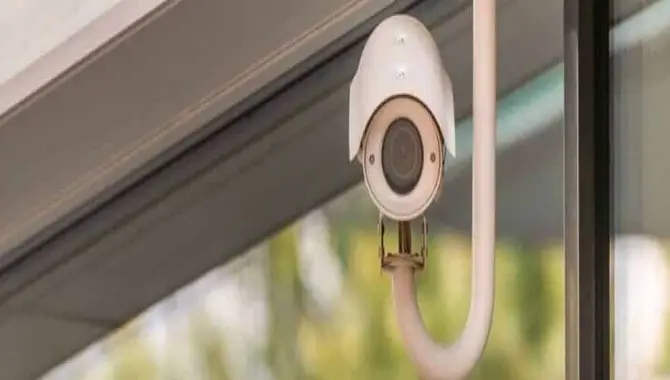
When planning the placement of your home security camera, it’s important to keep several factors in mind to ensure its effectiveness. Start by identifying potential vulnerable areas or locations where valuable items are stored, such as near the front door or windows facing onto a busy street.
Then ensure the camera is mounted at a height and angle that provides a clear field of view for maximum surveillance coverage. Avoid placing cameras in direct sunlight or areas with extreme weather conditions, as this could affect picture quality.
Ensure you can quickly access power nearby to install your wired or battery-powered security camera. For wireless models, ensure they’re within range of your Wi-Fi router for seamless live streaming and footage storage on Google Drive or other cloud-based solutions.
DIY Vs. Professional Installation – Which One Should You Choose?
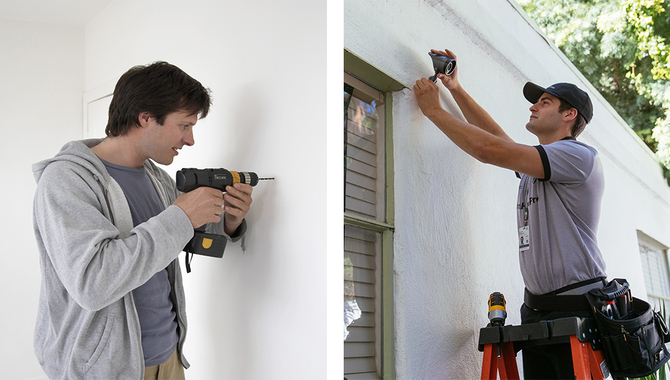
When choosing between DIY and professional installation for security systems, weigh the benefits and drawbacks of each. DIY saves money but requires technical knowledge, while professional installation ensures reliability. Consider system size and complexity before deciding. DIY may be suitable for smaller systems, while larger ones require professional installation. Budget and preference also play a role in the decision-making process.
How To Install A Wired Security Camera
Installing a wired security camera is all about finding the perfect spot to place it. Begin by selecting an ideal location that offers optimal visibility and few obstructions. After deciding the best spot for your wired camera installation, drill holes for mounting brackets and run wires through walls or ceilings. Properly positioning the lens to get footage of what’s necessary is crucial. Finally, test everything out before securing it into place.
How To Install A Wireless Security Camera
To set up a wireless security camera system, selecting the perfect spot for your camera is essential. Consider factors such as visibility and potential obstructions before mounting it securely with screws or adhesive mounts. Ensure your device is fully charged and can access a Wi-Fi network within its range.
Afterward, check whether the footage captured by your camera has a clear view of the field of view you want to monitor and adjust its settings as per requirement. Once that’s done, test your equipment thoroughly to guarantee it’s working correctly.
Powering An Outdoor Wireless Security Camera
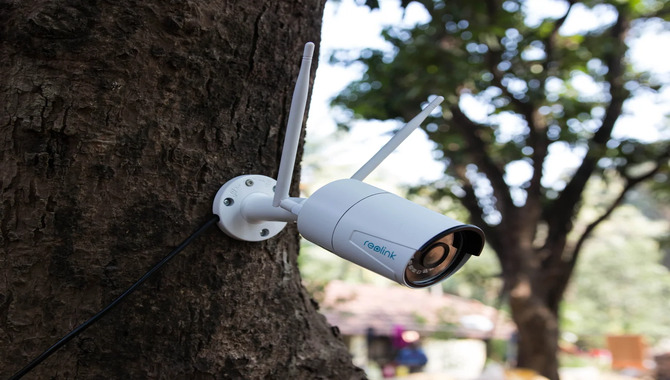
Outdoor wireless security cameras can be powered by either batteries or solar panels. Battery-powered cameras are easy to install and can be placed anywhere for optimum coverage. However, they need regular maintenance and battery replacement.
Solar-powered cameras are a great way to protect your home without increasing your carbon footprint, as they run on renewable energy. However, their effectiveness depends on the amount of sunlight they receive in a day. Therefore, it’s best to consider the location of the camera before choosing a solar-powered option. Select a reliable power source that suits your needs and budget.
How To Hide Security Camera Wires Outside
When it comes to outdoor security camera systems, hiding the wires is an essential aspect for better aesthetic appeal and safety reasons. You can do this by burying the wires underground or running them through conduit pipes. Alternatively, wireless security cameras eliminate the need for wiring altogether.
It’s crucial to choose a suitable location for your camera that provides adequate lighting and field of view. Also, adhere to all local laws and regulations governing outdoor surveillance cameras.
How To Ensure Your Wi-Fi Is Compatible With The Camera
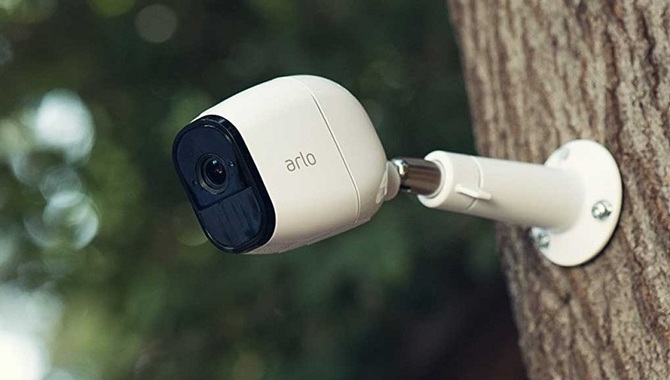
To ensure that your wireless security camera works perfectly, it is essential to have a stable Wi-Fi connection. The first step is to verify whether your current Wi-Fi network meets the requirements specified by the camera’s specifications. Upgrade your router or get a Wi-Fi extender if needed.
Secondly, ensure your Wi-Fi password is strong and secure to prevent unauthorized access to your home security footage. Ensure you update both your router and camera firmware regularly for optimal performance and security.
App Setup And Customization
Setting up an app for your security camera requires careful consideration of various factors. One of the most important is choosing a camera with an easy-to-use app that allows customization of essential features like motion detection and notifications. In some cameras apps, you may also opt for advanced features such as facial recognition or two-way audio communication.
Another aspect worth considering is deciding whether to use cloud-based or local storage systems for your footage. Always test out the app before deciding which home security camera installation option works best for you.
Connecting The DVR Box To The Cameras
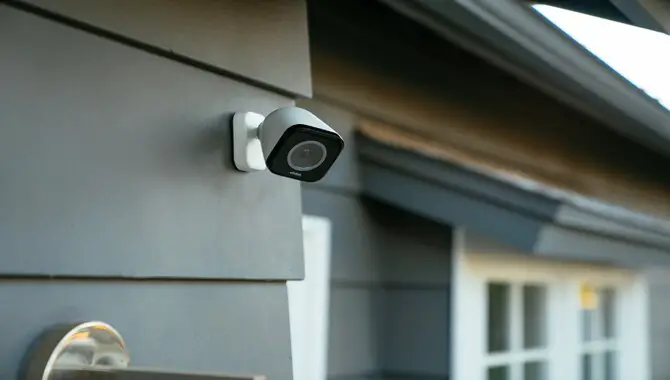
To connect your cameras to the DVR Box when installing a security camera system at home or office, select the appropriate type of cable (Ethernet or coaxial) and accurately measure the distance between them. After securing and protecting the cables from any damage or interference while installation is in process, run them from each camera to the DVR box.
Once connected correctly, you can configure your system settings through a tablet or smartphone app and start monitoring what matters most for you- whether it be indoor/outdoor surveillance cameras with night vision capabilities for added security protection against intruders who wish to break in.
Adding A Hub To Your Security Camera System
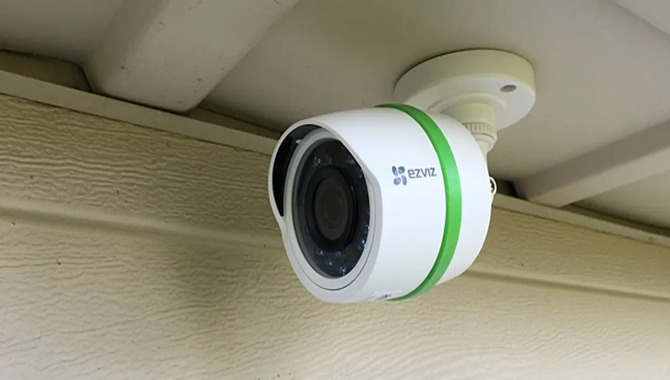
Enhance the functionality and usability of your security camera system by adding a central hub. It provides remote access and management for all connected devices, including outdoor cameras, wireless cameras, indoor cameras, DVRs, smartphones, tablets, and PCs. Compatibility with existing cameras is crucial when choosing a hub for your security system.
A hub also enables advanced features like motion detection alerts, cloud storage for footage, two-way audio communication via smartphone app or tablet app, and a wider field of view. Protect yourself from intruders by setting up a home security camera system with a hub – without drilling holes or running wires through walls – using battery-powered or wireless security cameras systems like Arlo or Vivint.
Conclusion
Security cameras help protect our homes and loved ones from theft, vandalism, and other crimes. However, installing a security camera can be daunting if you don’t know where to start. Before you begin the installation process, it’s important to consider factors like camera type, placement, installation method, power source, Wi-Fi compatibility, app setup, and customization.
Whether to install the camera or hire a professional installer depends on your comfort level and expertise. By following the steps, you can ensure that your how to install a security camera is properly installed and functioning as intended. Remember to choose a location that provides a clear view of the area you want to monitor, and to test your camera regularly to ensure it works correctly.
Frequently Asked Questions
[rank_math_rich_snippet id=”s-1cf0f674-6cd7-4c9f-bf73-915da07f95d3″]

I am passionate about home engineering. I specialize in designing, installing, and maintaining heating, ventilation, and air conditioning systems. My goal is to help people stay comfortable in their homes all year long.
